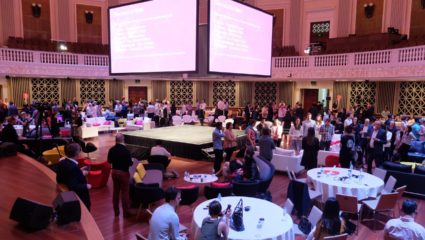As we look at what’s next for hybrid events, the AV1 and Sprintr teams give micenet their insights.
How has the demand for virtual, hybrid and in-person events changed over 2022 and into
2023?
Nigel Mintern, AV1 Producer: The demand for virtual and hybrid events was higher in early 2022. As the year progressed, in-person events came back with a bang – AV1 had its biggest month on record in May followed by an even bigger November. For 2023, most events we are planning are in-person.
Chris Schlueter, Sprintr’s Director of Business and Innovation: We are seeing a fork in the road – those who invested in virtual and hybrid events during the early pandemic years and see their value, and those who want to leave it all behind and just focus on live events.
How have virtual and hybrid events evolved?
Schlueter: Virtual and hybrid platforms have developed over the last few years. Event organisers also became more skilled in delivering digital content. Sessions have become shorter, content more refined and better suited to a virtual audience.
Kai Raisbeck, AV1 Creative Director: We are developing content that is more versatile to suit individual platforms and how people are engaging with them. We now need to be much more flexible, creating many content formats for mobile, projectors, LED screens and immersive experiences.
The demand for high-quality content is also rising rapidly. Our clients want a cohesive narrative that is on-brand, accompanied by a television-quality production, especially for on-demand viewing.
Richard Browning, AV1 Producer: We have created more immersive environments to incorporate a virtual speaker, with cameras shooting back into the audience so speakers can see crowd reactions and conduct Q&A. This live feedback is a game-changer for presenters to feel like they are a part of the live event, when they were previously presenting to a screen at home with little to no sense of how they were being received.
Has the interactivity of hybrid and virtual events improved?
Schlueter: We have moved from purely having a polling option in a virtual or hybrid engagement toolkit to now heading further down the path of real-time feedback. For example, Whalebone, which was recently acquired by Bizzabo, allows users to react with emojis, like Facebook Live. It also allows speakers to bring up people on stage virtually for Q&As, creating a more engaging experience for the speaker and the audience.
Then there are companies that have created 3D venues for content-based events, like a 3D-rendered car for a product launch. These innovations are largely among luxury brands and high-value FMCG brands as they try to stand out among younger audiences but will trickle down as the technology becomes more accessible.
This article appeared in the special AIME edition of micenet. You can subscribe to receive micenet’s industry news wraps each week here.


